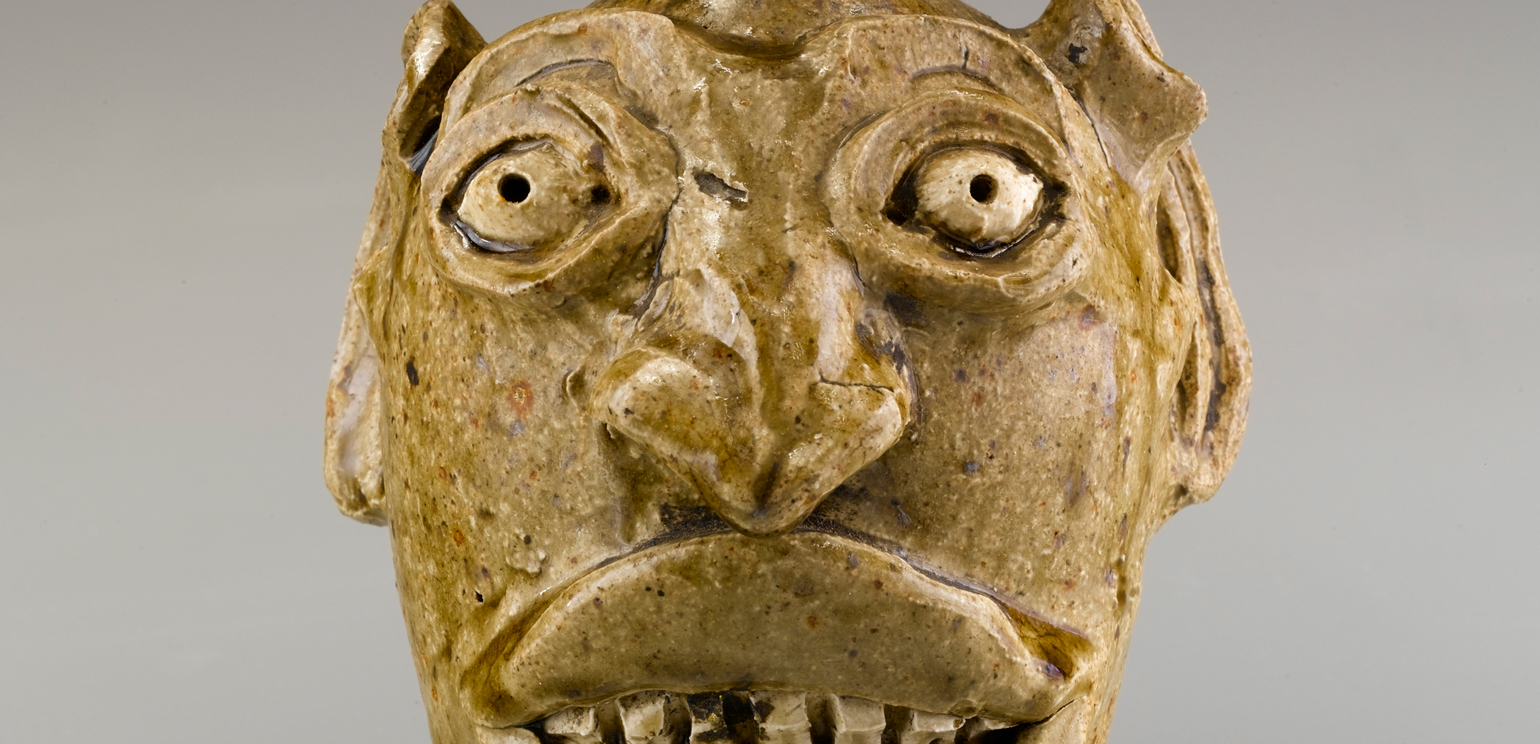
Face Jugs: Art and Ritual in 19th-Century South Carolina
Saturday, May 04, 2013 — Sunday, Jul 07, 2013
Decorative arts historians coined the term “face jug” to refer to a pottery type created by the African American enslaved community in the Edgefield district of South Carolina. The small vessel is turned stoneware with facial features — wide eyes and bared teeth — made of kaolin, a locally sourced clay. Historians originally believed that the face jug was utilitarian and used to store water. Multiple theories later surfaced involving its function as a container of magical materials and its ritualistic use. New research has shown that the vessel was likely multipurpose — and a coded object meant to be misunderstood. White potters appropriated the face jug design around 1880. They mainly discontinued the use of kaolin, a sacred material in West Africa, and produced the objects mostly as whimsies. The face jug thus lost the symbolic power of its original form.
This exhibition, organized by Claudia Mooney, assistant curator at the Chipstone Foundation, and the Milwaukee Art Museum, celebrated the formative African American vessels and their aesthetic power, while discussing their cultural meanings within a community of Americans that lived under challenging circumstances. Faces that have long stood silent here regained a voice.
Curator
Dale Couch, curator of decorative arts (in-house)
Sponsors
Mr. Alan F. Rothschild Jr. through the Fort Trustee Fund, Community Foundation of the Chattahoochee Valley, and the Friends of the Georgia Museum of Art